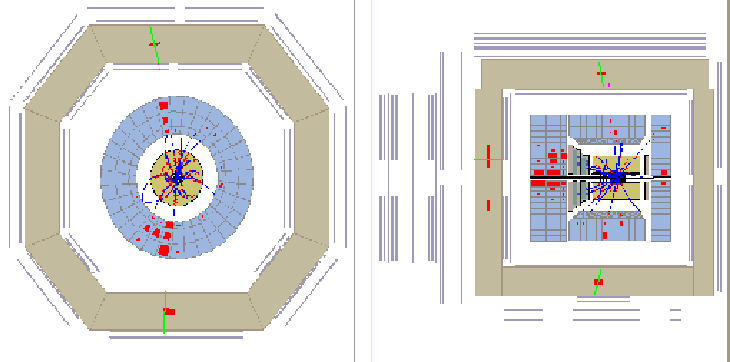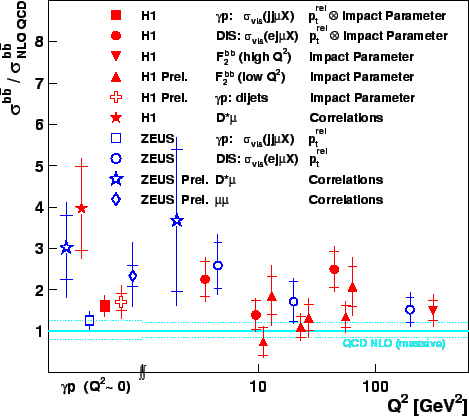 |
The ZEUS experiment has measured the beauty cross section, using
a sample of events in which
the two muons are identified in the pseudo-rapidity range
![]() [42].
The analysis provides almost full rapidity coverage and thus gives access to
a direct measurement of the total beauty cross section.
The beauty cross section is extracted from
the like-sign and unlike-sign subsamples by adjusting the beauty contribution in
the Monte Carlo simulation such that the normalization of the data is
recovered. The normalization of the unlike-sign charm background
is fixed to the results from the corresponding measurements.
It is assumed that the background from light-quark events is the same in the
like-sign and unlike-sign samples.
[42].
The analysis provides almost full rapidity coverage and thus gives access to
a direct measurement of the total beauty cross section.
The beauty cross section is extracted from
the like-sign and unlike-sign subsamples by adjusting the beauty contribution in
the Monte Carlo simulation such that the normalization of the data is
recovered. The normalization of the unlike-sign charm background
is fixed to the results from the corresponding measurements.
It is assumed that the background from light-quark events is the same in the
like-sign and unlike-sign samples.
The results of the various measurements of beauty production at HERA are shown in fig.40. In this figure the ratios between the measured cross section and the predictions from the fixed order massive calculations in perturbative QCD are depicted. All the measurements are in reasonable agreement within the errors. Note that the kinematic region of the various measurements can differ drastically.
 |